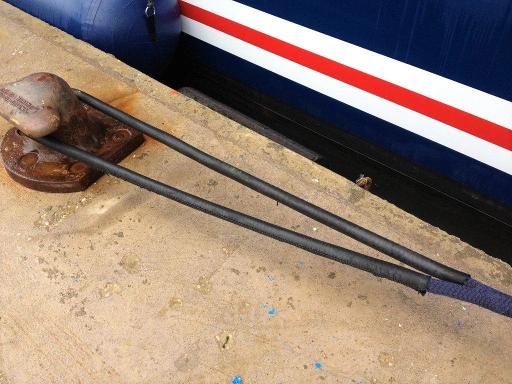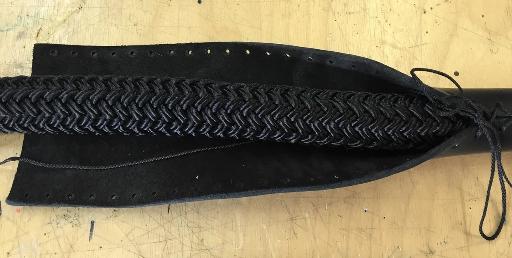What are a mooring lines?
Arguably, one of the most important pieces of kit onboard your boat is a mooring line; it’s all well and good having a great boat, but if you can’t safely secure it at the quay, harbour or pier then you’re in real trouble.
Damage to a yacht that has not been secured properly can be extensive and can happen very quickly... investing in quality mooring lines is a necessary expense when leaving your boat for any length of time.
This blog post will discuss the important considerations - such as length, diameter and material - that need to be made when purchasing new bow lines, stern lines, and spring lines (fore and aft). These lines are the absolute minimum four mooring lines a boat should possess, and each are equally as important: the bow line keeps the bow near the dock, the stern line holds the stern close to the dock a and the spring lines prevent forwards and backwards surges.
As a precaution, it is advisable to carry a couple of additional mooring lines in order to be fully prepared for all possible mooring scenarios.
Mooring Lines Length
When calculating the length of your mooring line, it is possible to follow a general rule of thumb. For bow lines and stern lines, the length of the line should be at least half the length of your boat. For spring lines, the length should be the full length of the boat – or longer. When mooring to a fixed dock, it is important to remember that the length of your mooring lines should allow for the fluctuation of the tide.
In addition, it is our advice to always carry a longer line on board your boat - around 5 boat lengths long. This line will come in useful in towing scenarios, or will provide great help when conditions are heavy in the harbour.

Mooring Lines Diameter
Regarding the diameter of mooring lines, the recommended diameters (in mm) of polyester or polyamide mooring lines for boats from 26ft – 62ft are as follows:
| BOAT LENGTH (ft) | DIAMETER (mm) |
| 26 | 10 |
| 33 | 12 |
| 39 | 14 |
| 46 | 16 |
| 53 | 18 |
| 62 | 20 |
However, if your boat is particularly heavy in respect to its length then it is advisable to select a mooring line that is one size greater in diameter. Mooring lines with a larger diameter can also be easier on your hands, but it is important to note that thicker rope can be more difficult to manoeuvre.
Mooring Lines Material
In terms of material, lightweight and robust synthetic fabrics are ideal for mooring lines. Whilst polypropylene presents a cheaper option, polyester or polyamide are known for providing high quality and durable mooring lines that represent great value for money.
One example is Gottidredi Maffioli’s Maxidock- a ‘‘double braid dockline characterised by a strong and elastic Polyamide core and a soft HT Polyester cover’. Produced out of high-quality material, this mooring line is very easy to handle and remains soft even after prolonged use.
Another great option is Robline’s (previously FSE Robline) Palma Elastic. Made of polyamide, the rope is highly elastic with lots of stretch. It is vital that mooring lines are manufactured out of materials with elasticity and stretch. Unlike sheets, stretch is important for a mooring line as it reduces the shock on the boat caused by movement and load. This shock can occur due to bad weather or the rise and fall of the tide, for example.
Other beneficial qualities of polyester and polyamide include: strength, chafe resistance, longevity, UV stability and the ability to resist deterioration when wet. To overcome chafing, it is also possible to cover the ends of the mooring line in leather or canvas to further increase chafe resistance.

Summary:
Overall, when selecting a new mooring line, it is important to value quality over price. Mooring lines are worth the investment – don’t risk an expensive yacht with a subpar line. A superior quality, durable material will also ensure you purchase fewer mooring lines over time. Make sure to use the above table to select the correct diameter, and the general rules of thumb to select the correct lengths for your boat. We recommend you carry x3 lines at full boat length and x3 lines at half boat length to cover the majority of mooring scenarios.
If you have any questions about mooring lines, please feel free to email us at [email protected], or click the link below to see our full range:


A Guide to Mooring Lines